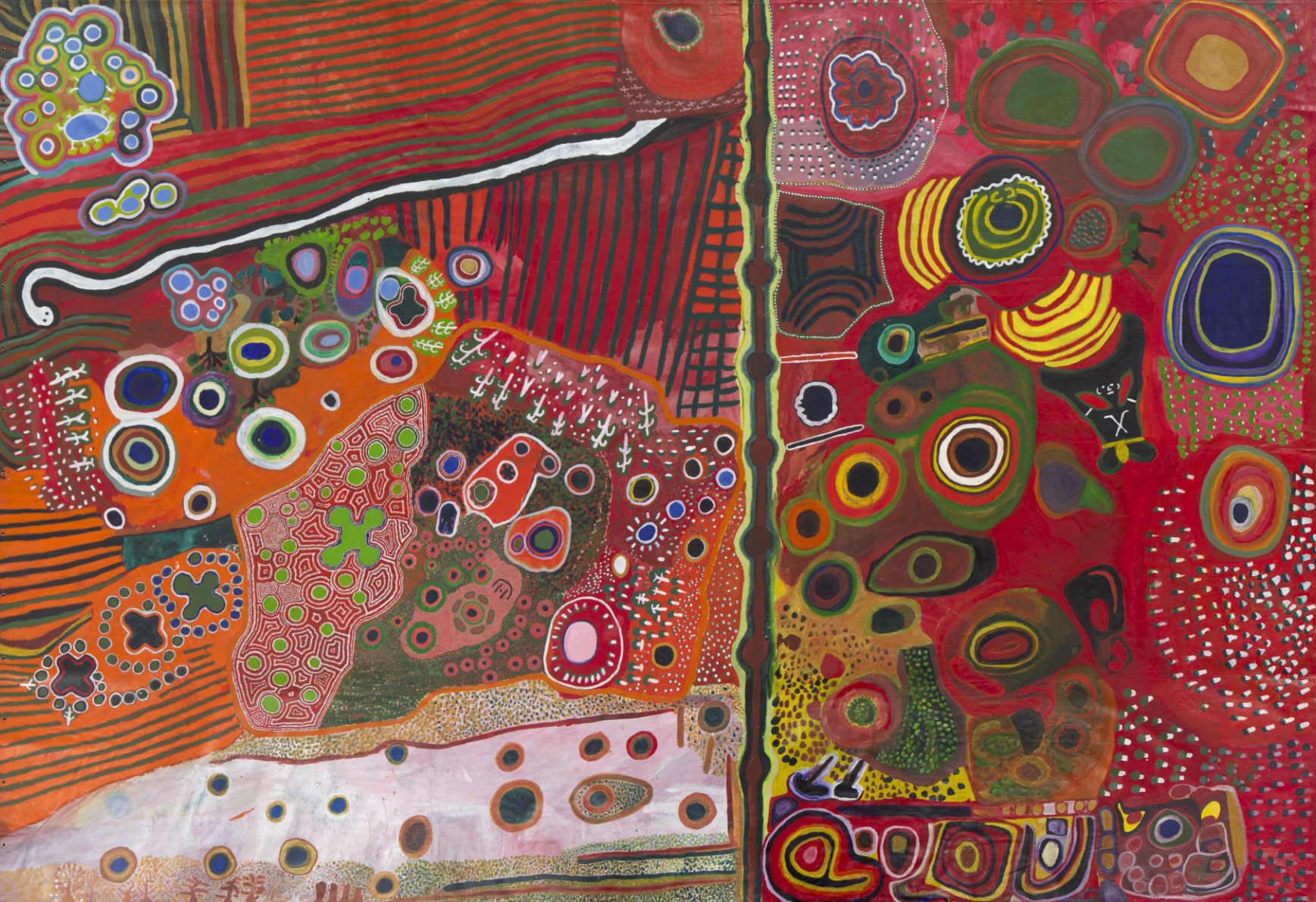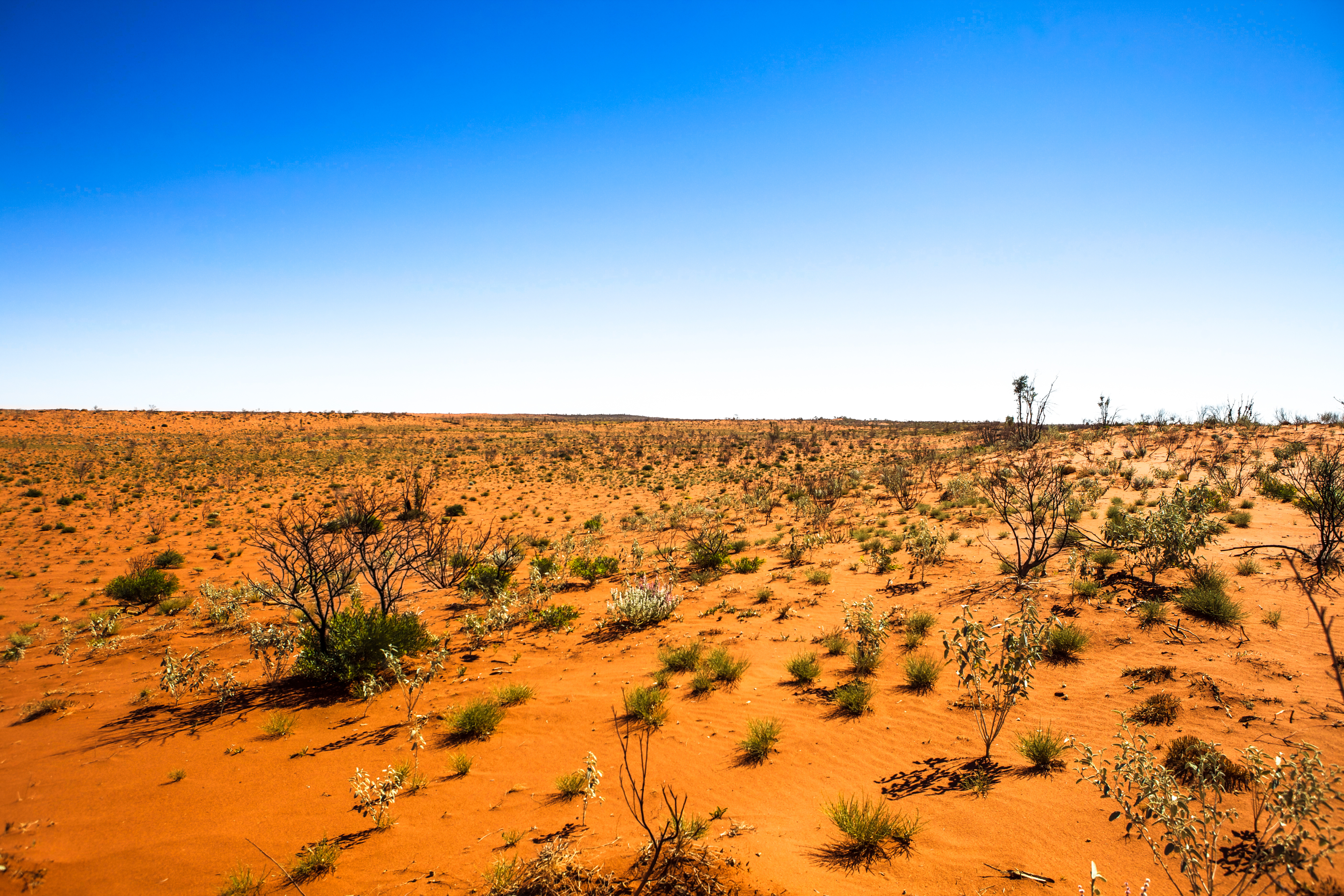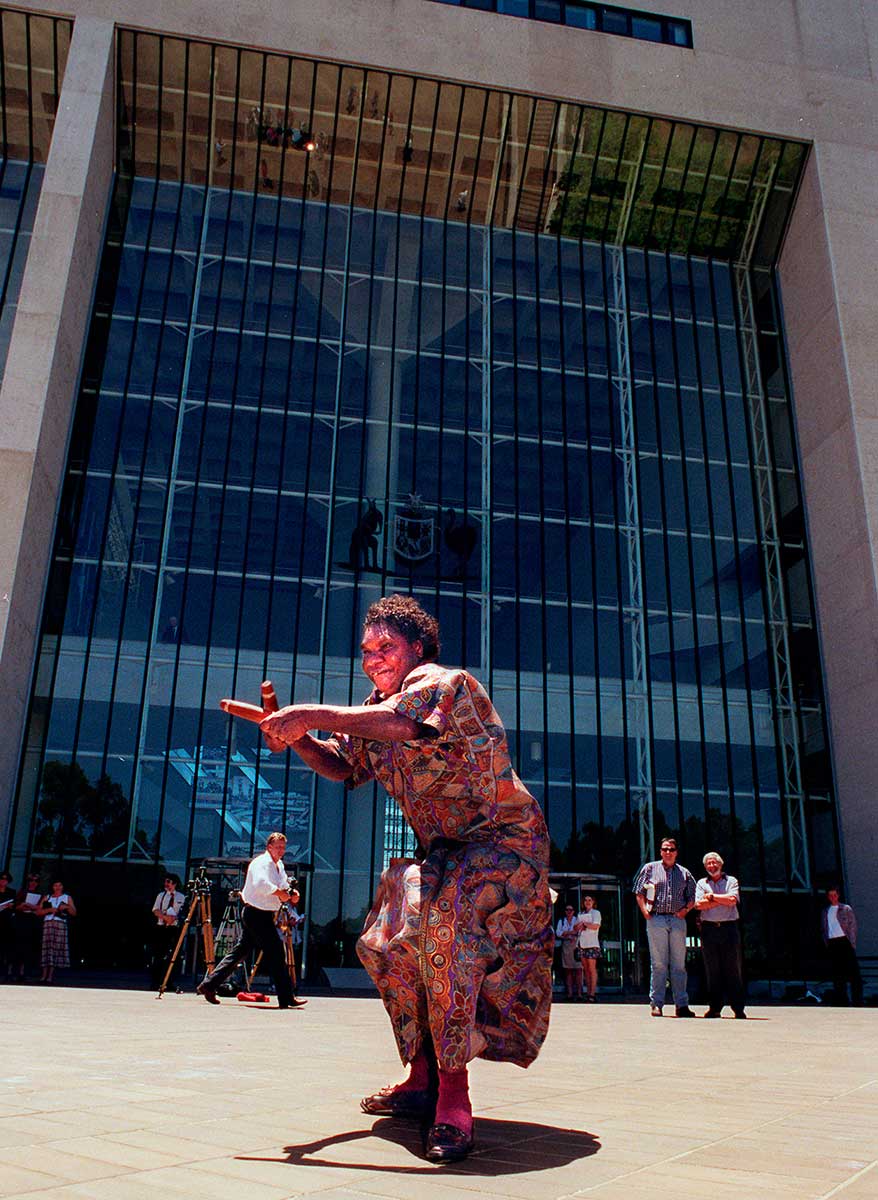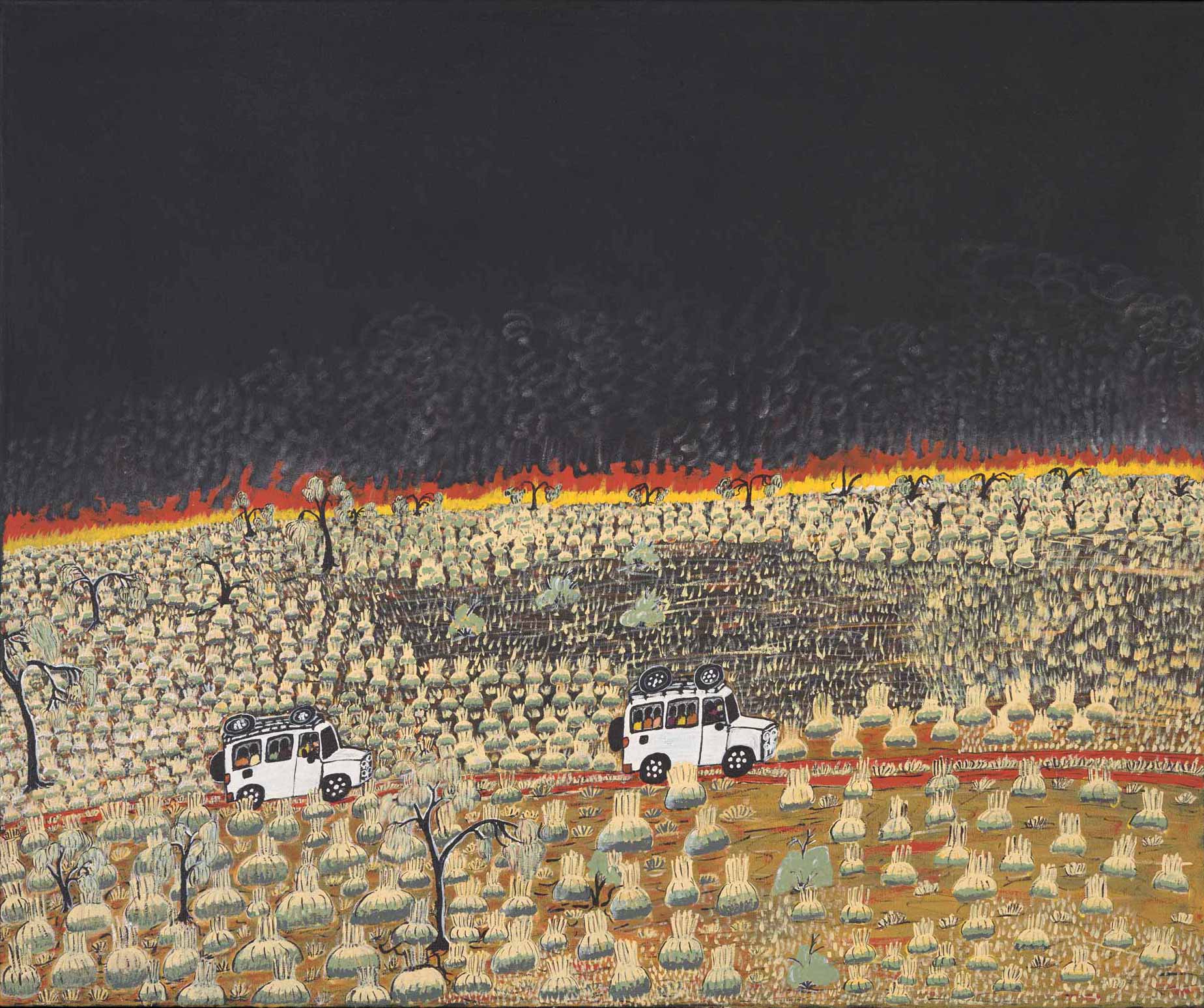Ngurrara I is a large artwork painted by traditional owners at Pirnini in Western Australia to prepare for a native title claim over much of the Great Sandy Desert.
The painting was too small for accurately showing all the artists’ Country. It became a ‘practice run’ for a larger painting used in court. The land was returned to the Ngurrara people in 2007 and 2012.
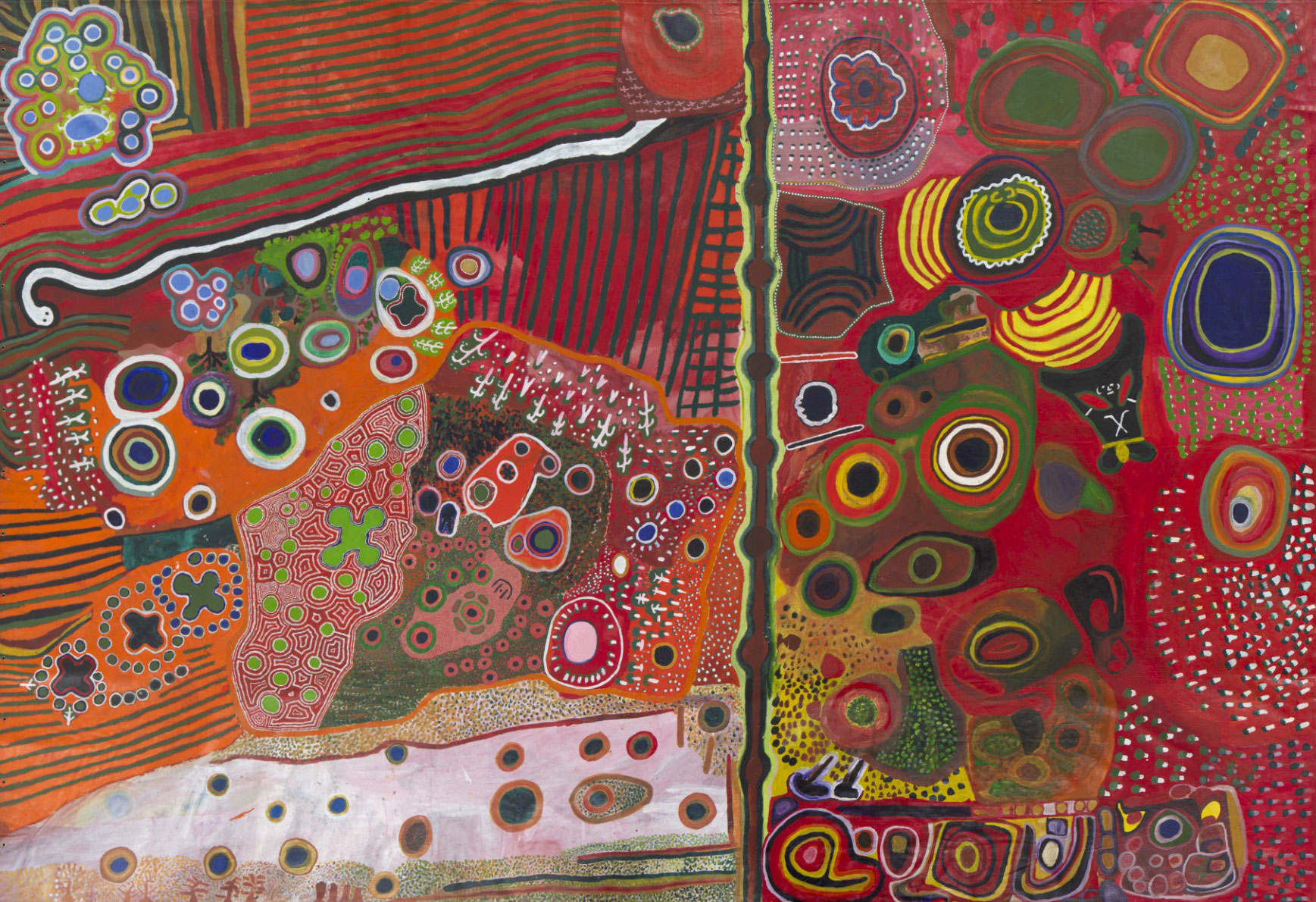
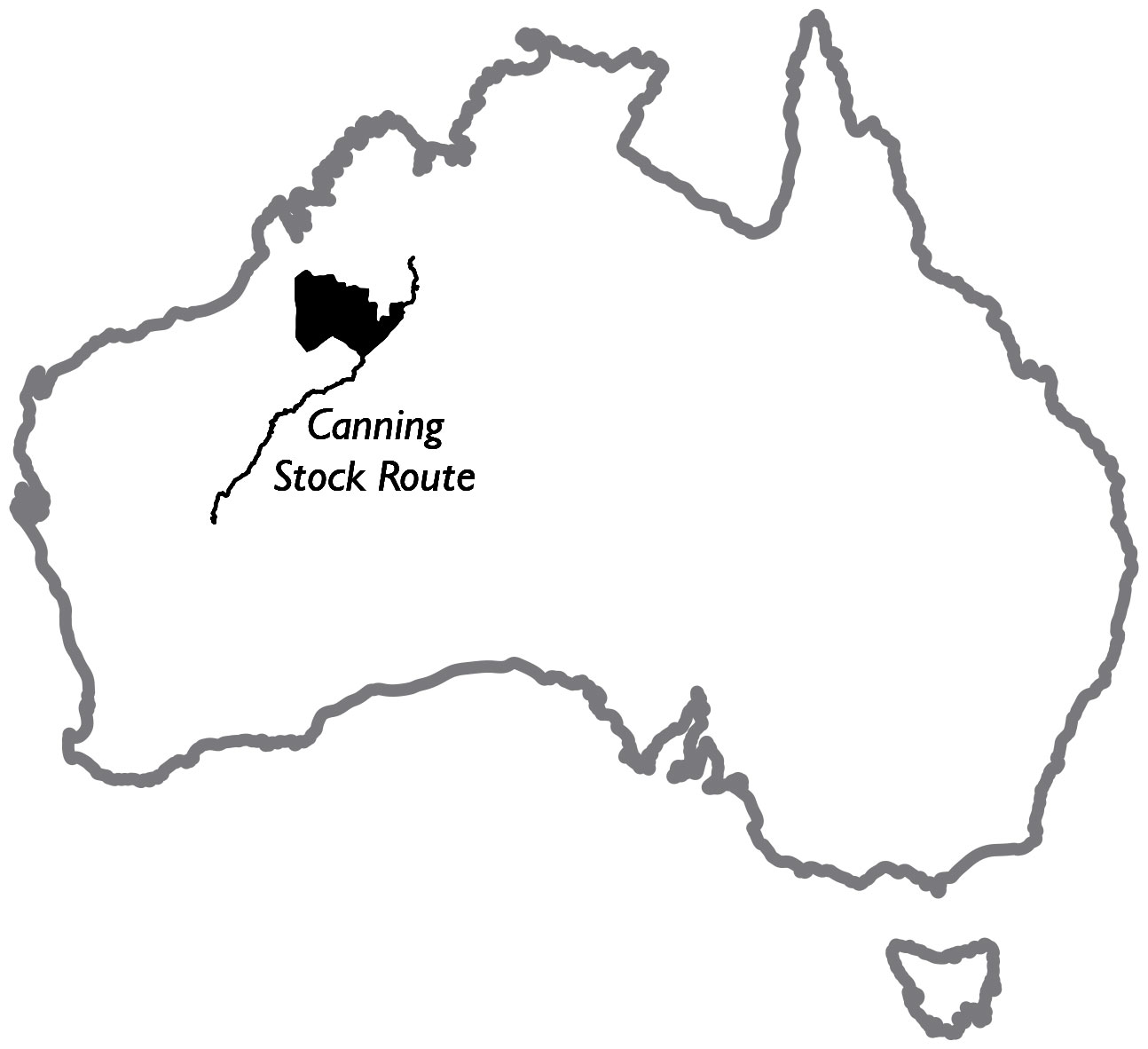
Map of living waters
The Ngurrara I painting is a map of the artists’ home Country. It also shows the Canning Stock Route, made on Aboriginal homelands, as mining and farming expanded in the early 20th century.
The darker area on the map of Australia shows the Country covered by the Ngurrara land rights claim, with the Canning Stock Route along the edge.
People involved with creating Ngurrara I
Different sections of Ngurrara I show different sections of Country. Each section was painted by traditional owners of that Country.
|
Yarntayi and Pirnini
Amy Nuggett
|
Wayampajarti
Ngarta Jinny Bent Jukuna Mona Chuguna Mawurkura Jimmy Nerrimah Wakartu Cory Surprise |
Japirnka
Pijaju Peter Skipper Kuntika Jimmy Pike Paji Honeychild Yankarr Sundown Ellory |
|
Pikarangu
Peter Clancy
|
Warla
Hitler Pamba Nyuju Stumpy Brown Nada Rawlins Nyangkarni Penny K-Lyons |
Kaningarra
Boxer Yankarr
|
|
Kurtal
Ngilpirr Spider Snell Ngarralja Tommy May Dorothy May Jukuja Dolly Snell Purlta Maryanne Downs Janyka Ivy Nixon Mayarn Julia Lawford Kuji Rosie Goodjie |
Canning Stock Route
Monday Kunga Reela Angie
|
Kulyayi
Kurtiji Peter Goodiji
|
Connection to Country
First Nations people understand they have always been on the Australian continent. The Ngurrara artworks show important Jukurrpa (Dreaming) sites and Country that provide people with food and water. Their spiritual connection to this Country continues today.
On Ngurrara I, the Canning Stock Route appears as a dark brown line highlighted in yellow, from the top to bottom of the painting. Circles along the line show the location of wells. Also shown are jila, the natural springs or waterholes that are important places to the traditional owners.
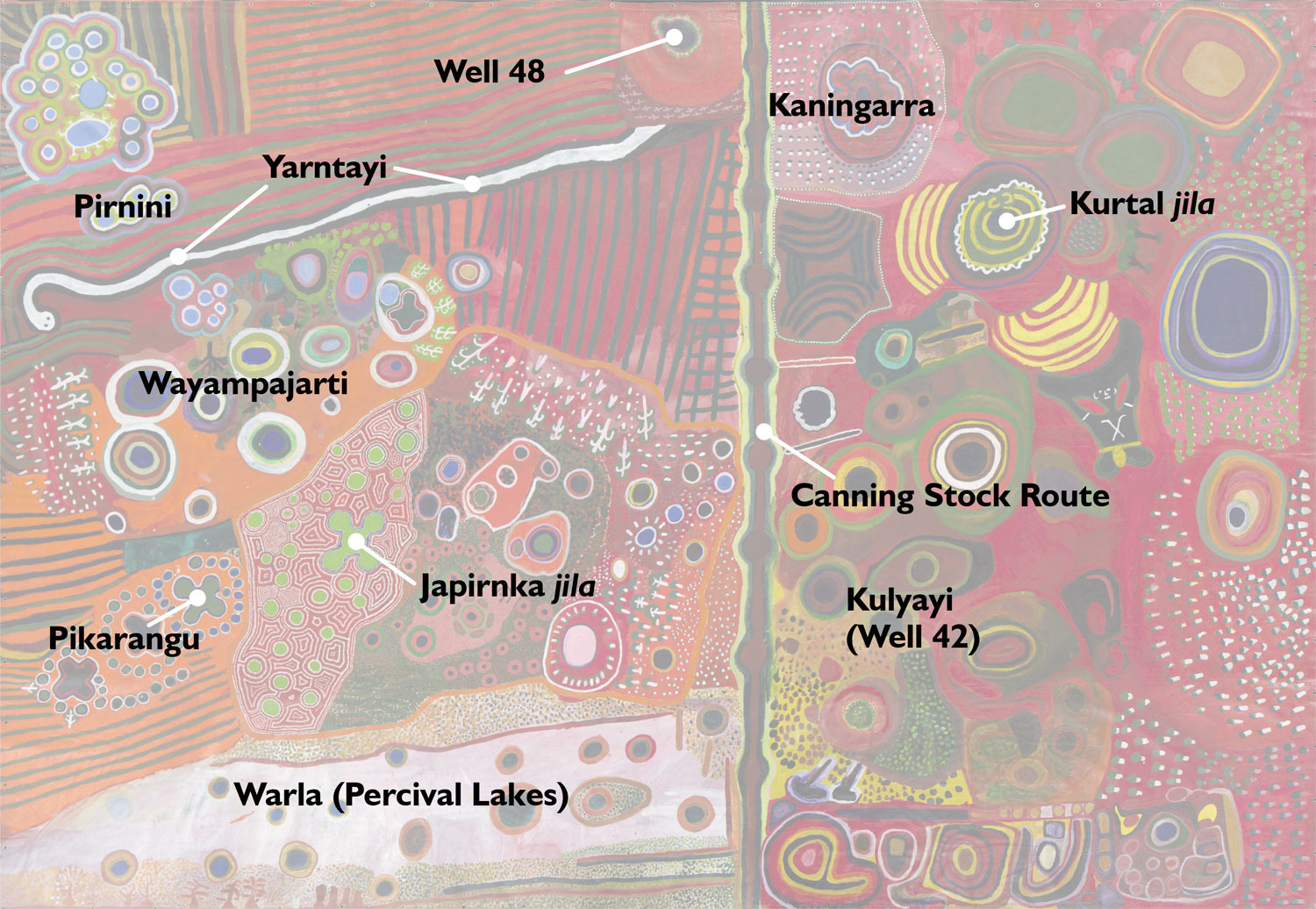
Land and law
When the Australian continent was claimed by Captain James Cook, Britain said there was no legal system of land ownership. Land was given and sold to groups including farmers and miners. Many First Nations people were forced to leave or to live in missions.
On Ngurrara Country, First Nations people from many different language groups helped surveyor Alfred Canning find water sources. This became a stock route, used by drovers with mobs of cattle.
In 1993 the High Court of Australia passed a new law recognising that Aboriginal and Torres Strait Islander peoples have rights to their land. These rights existed before the British arrived and continue to exist today.
The second canvas, Ngurrara, helped prove connection to Country in their native title claim. The land was returned to the Ngurrara people in 2007 and 2012.
Fun fact
There are 2 Ngurrara paintings. The painting at the National Museum of Australia in Canberra is the first painting and is called Ngurrara I. A second painting, called Ngurrara, was created on an even larger canvas to fit more cultural knowledge for the courts. This second artwork is at Pirnini, Western Australia.
Second Ngurrara canvas returns to Country
Video: ABC Kimberley news report by Emily Jane Smith with artists Ngurnta 'Amy' Nuggett and Terry Murray, 2017
Transcript
+ -EMILY JANE SMITH: In the desert south of Fitzroy Crossing a piece of history is welcomed home. Many of these artists haven’t seen this canvas since painting it 20 years ago. To the Ngurrara people of the Great Sandy Desert, this isn’t just a piece of art. It’s a map of their Country. An area the size of the state of Tasmania. The lines and swirls of colour chart waterholes and soaks.
NGURNTA ‘AMY’ NUGGETT, speaking Walmajarri, translated by her daughter Annette Kogolo: Like the non-Indigenous people, they have a map for us. We painted it because we see our Country like a map.
EMILY JANE SMITH: It was created as part of a 1996 native title claim. Many of the claimants spoke little English, so communicated their ties with the land through paint. It was crucial evidence. Native title was eventually granted, 10 years later.
TERRY MURRAY: Tell the government that we are from this land. We are Ngurrara people.
EMILY JANE SMITH: Terry Murray was just 20 when he worked on the canvas.
TERRY MURRAY: It feels really powerful. It’s getting really emotional to me.
EMILY JANE SMITH: The artwork was displayed in the National Gallery of Australia, but then spent years in storage. Artists and elders here in Kurlku are now deciding how best to share the canvas with the rest of the country and even the world. There are talks of a National Gallery tour with the proceeds going directly back into the community.
TERRY MURRAY: Create a new pathway for the generation to link into, like how we can use the map as a tool and a guide, and also bring in jobs.
NGURNTA ‘AMY’ NUGGETT, speaking Walmajarri, translated by her daughter Annette Kogolo: I’m so proud, you know, looking at the canvas now, we painted the places where we have actually travelled.
EMILY JANE SMITH: A link to the past, now helping guide the future. Emily Jane Smith, ABC News, Lake Pirnini.
Second Ngurrara canvas on Country
Research questions
1. What information can you find about the second Ngurrara painting? Consider why it was made, how it was used, and what role it played in the Ngurrara native title claim.
2. What is the importance of Country and place for First Nations identities? What impact did gaining native title have on the Ngurrara people?
3. Look closely at the Ngurrara artworks. How did First Nations knowledge make the painting eligible for native title?
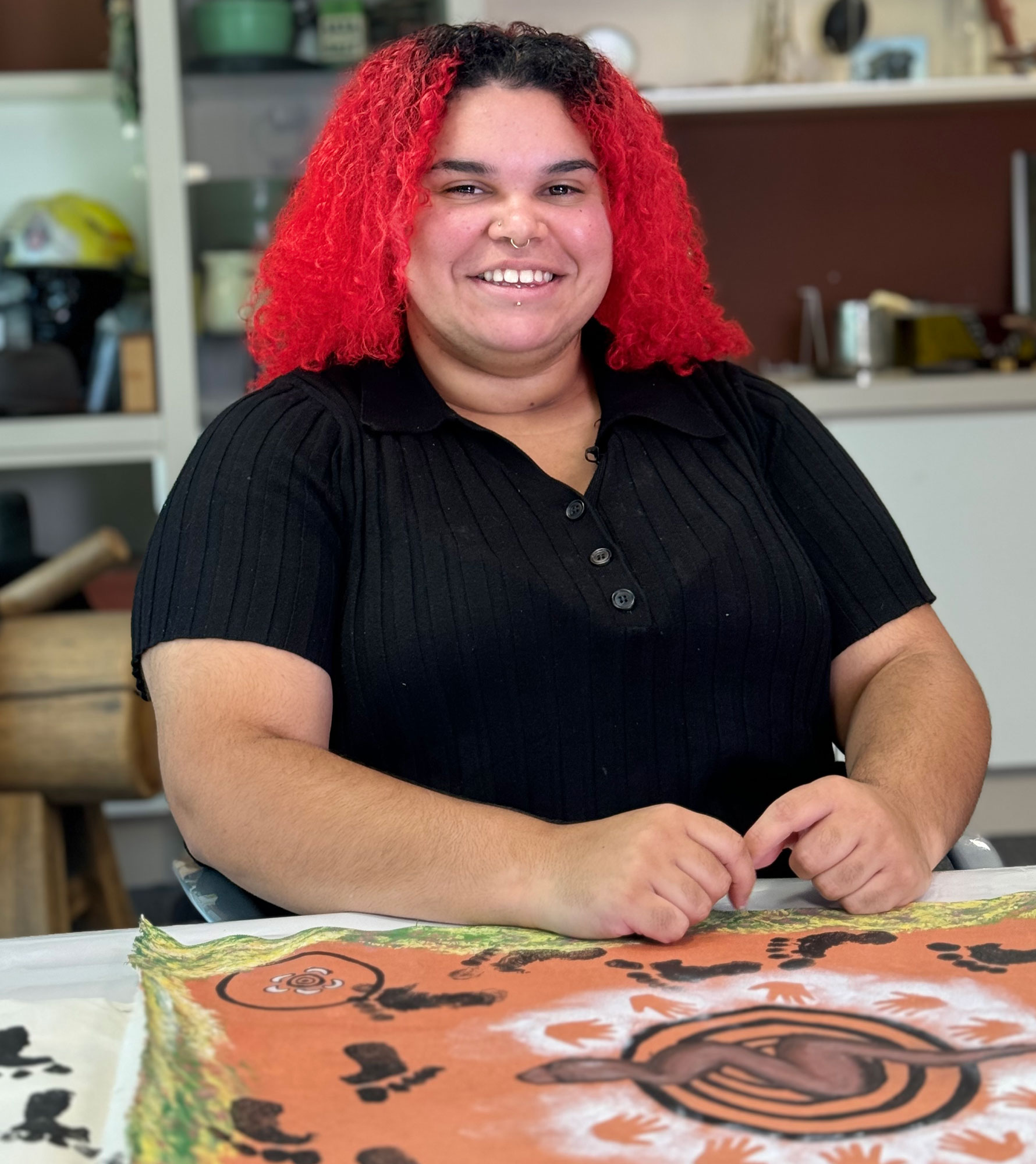
About the author
My name is Summar and I am a Wiradjuri and Bundjalung woman and part of the Indigenous Apprenticeship Program at the National Museum of Australia in 2024. One of my projects working in digital education is to create an educational resource based on one object from the Museum’s collection.
I narrowed it down to 6 pieces based on the objects that I thought would be interesting and make an amazing digital resource. I picked Ngurrara I for the story behind the image and the eye-catching design.






